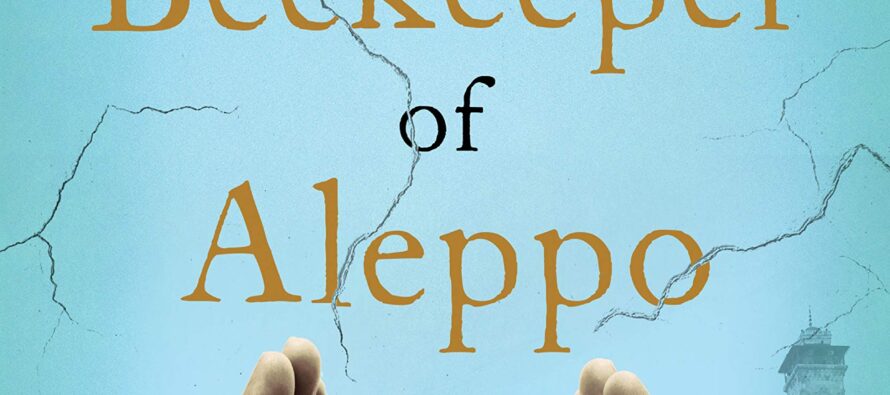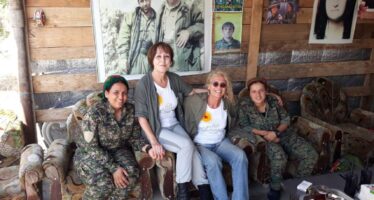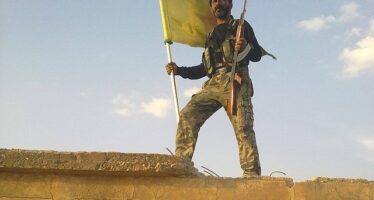Ireland and the tragedy of refugees

![]()
I have just finished reading The Beekeeper of Aleppo by Christy Lefteri. Christy was a volunteer working with families fleeing war in Syria and trying to get into the EU. Her novel is a profoundly disturbing and timely reminder of what happens to human beings, just like you or me, when they are caught up in dreadful conflicts or disasters not of their making.
The plight of refugees and migrants is as old as human experience. The people of this small island, as a result of colonisation, have a long shared history of forced migration. As a consequence, most Irish people identify sympathetically with those who find themselves in similar situations. It’s in our DNA. The international refugee crisis of recent years, especially in the Mediterranean Sea, and the decades of displacement and disadvantage endured by the Palestinian people, have seen Irish citizens providing critical political, economic and financial support to those in need.
This experience of the Irish as refugees fleeing hunger, poverty and repression was underlined last month when the Canadian government confirmed that the remains of three children, washed up on a beach in Cap-des-Rosiers, in the Gaspe region of Quebec, Canada, were from Ireland. The bones of the three, aged between seven and 12, were found in 2011. A subsequent search of the beach by archaeologists uncovered the remains of another 18 people, mostly women and children.
Their investigation found that all of the victims were from the Carricks of Whitehaven, an Irish ship sailing from Sligo in 1847. It was carrying 180 passengers when it sank in a storm of the Gaspe coast as it made its way toward Quebec. One hundred and thirty two were drowned. Scientists from the Universite de Montreal concluded that the 21 victims were fleeing the Great Hunger. They had a diet typical of rural people In Ireland at that time and many suffered from diseases and malnutrition.
Last week the remains of the 21 were laid to rest at the Irish memorial on Cap-des-Rosiers beach. It is one of many such memorials that stretch from Canada down the east coast of the USA. These have been erected in memory of the tens of thousands of Irish who died on the coffin ships and in the fever camps trying to escape An Gorta Mór – the Great Hunger – of 1845-49. Not far from this spot is Grosse Ile – an island in the Gulf of St. Lawrence. It was a quarantine station established to house immigrants arriving from Europe. It is believed that at least three thousand Irish died there between 1845 and 1849. Another six thousand Irish refugees died at nearby Windmill Point and thousands more perished on the coffin ships and were buried at Sea.
Viveka Melki, who made a documentary about the sinking of the Carricks of Whitehaven, reported that some of the skeletons that were unearthed were found to be holding children in their arms.
One hundred and seventy years ago there were no photographers or documentary makers, or broadcast news cameras to record the human tragedy that was wiping out families and villages across the island of Ireland. Or to record the horror of impoverished, starving men, women and children, dying in their thousands in coffin ships crossing the Atlantic, or on the shores of north America.
Today there are photographers and broadcasters on the Mexican-US border, in the Mediterranean Sea, in North Africa, in Central Africa and elsewhere recording the escalating humanitarian refugee crisis.
Two weeks ago, on Sunday 23 June, Óscar Alberto Martinínez Ramírez, aged 25 drowned trying to cross the Rio Grande from Mexico into the USA. In the photograph that was published several hours later he can be seen lying face down on the bank of the river with his 23 month old daughter Angie Valeria in his arm. It is a graphic, brutal, heart rending picture of a father and daughter fleeing poverty and violence, and dying. It is an image which captures the horror of those Irish migrants also holding their children as they drowned off the coast of Canada.
It was also a reminder of another equally harrowing and distressing photo from four years ago when three year old Aylan Kurdi was pictured lying on a beach in Turkey. He had died with his five year old brother Galip and mother Rihan and seven other refugees trying to cross the five dangerous miles from Turkey – which is outside the EU –to the Greek island of Kos which is inside the EU. Aylan and his family, and Óscar Alberto Martinínez Ramírez and his daughter Angie Valeria, are the victims of a refugee crisis that the world has failed to grasp and which is growing worse every year.
A report covering 2014 and 2018, by the UN’s International Organisation for Migration, and published last month, reported that 32,000 migrants had died or were reported missing. Of these nearly 1600 were children. The deadliest migration route is the Mediterranean where at least 18,000 died. It is also the most dangerous route for children with 678 having drowned. The remains of 12,000 who drowned in the Mediterranean have never been found.
Today, the United Nations estimates that there are 70 million people displaced from their homes. This is double the figure from 20 years ago. It is the worst refugee crisis since the second-world-war and governments are failing to take effective steps to reduce it. They must do more. Particularly, the governments of Europe. It was their imperial ambitions over recent centuries, and military adventures of the last two decades, which created many of the crises confronting the people of the Middle East and Africa.
In recent months, the EU’s Operation Sophia has stopped participating in missions to rescue those in trouble in the Mediterranean. Operation Sophia is credited with saving tens of thousands of lives in its four years of operation. Its objective had been to disrupt people traffickers and rescue migrants crossing from north Africa. However, at the end of March EU diplomats said Operation Sophia will no longer carry out maritime patrols after Italy refused to receive those rescued at sea.
As a result migrants rescued by the Libyan coastguard end up in migrant camps in Libya where they are often the victims of traffickers and slave traders. In recent days one such camp was bombed and over 50 migrants killed. The Tánaiste Simon Coveney recently acknowledged that “there are concerns about physical and sexual abuse of both adults and children in many of those camps. It is appalling”.
The EU needs to do more. It cannot wash its hands of its responsibilities in this crisis. Operation Sophia should be recommenced urgently and more funding to the United Nations humanitarian agencies must be a priority.
Related Articles
An End to the Silence!
![]()
The fact that the U.S. Justice Department did not respond to a request by the Chilean government and pressure from the Jara family for his extradition is an outstanding issue reminding the world of the involvement of the Nixon-Kissinger administration in these crimes against humanity and their simultaneous involvement in Operation Condor
Kobane, three years after the liberation
![]()
Patrizia Fiocchetti has gone back to Kobane three years after the liberation from DAESH and found a city full of life and activities
FRENCH HELP FOR ROJAVA? Interview with Rêdur Xelil
![]()
On Thursday, a delegation from northern Syria and Rojava was received by French President Emmanuel Macron at the Elysee Palace in Paris. Rêdur Xelil, SDF foreign affairs official, gave details of the meeting in an interview with ANF.





